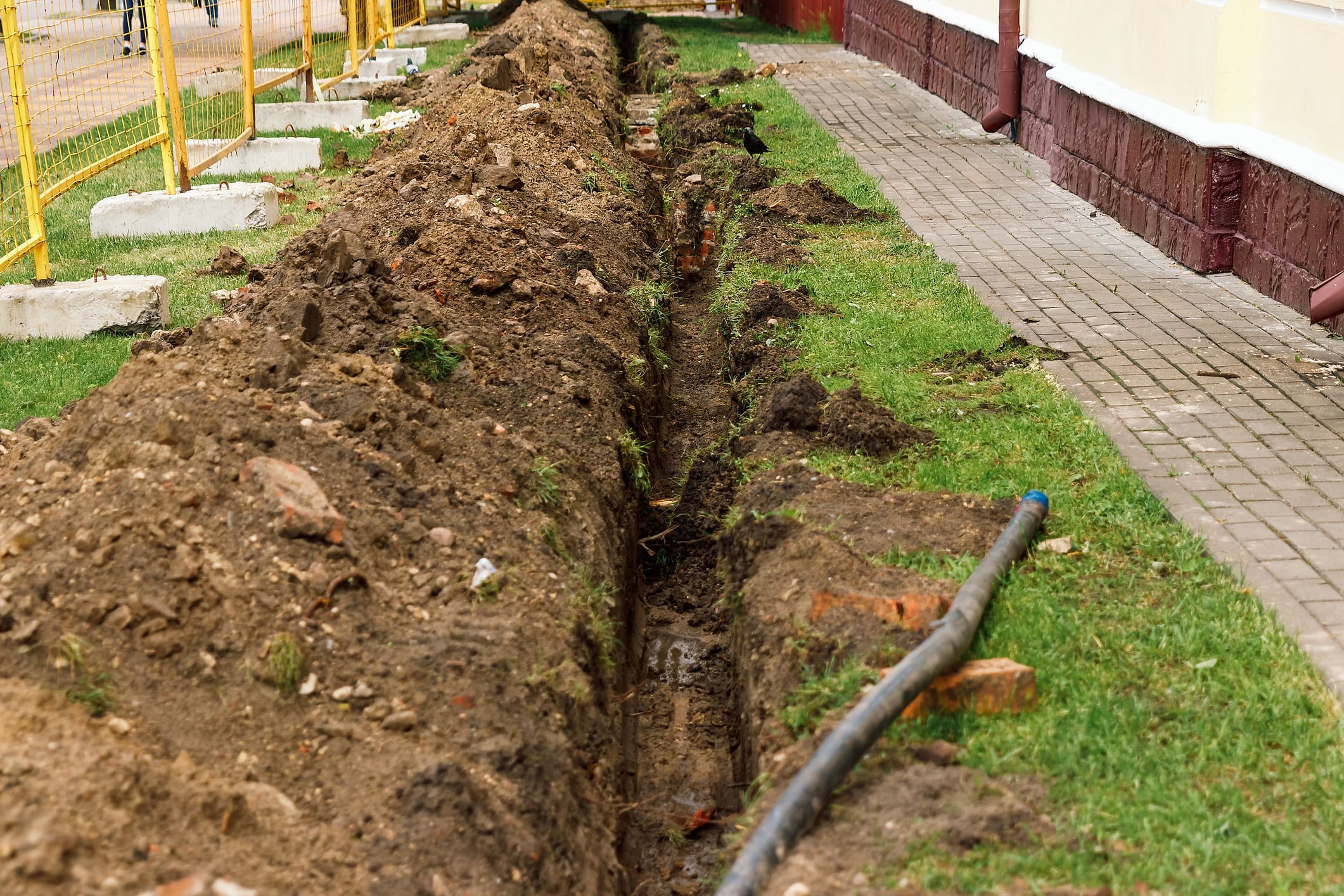Resources
How Deep Should a French Drain Be?

When it comes to protecting your basement from moisture-related issues, a reliable solution is crucial. One such solution that has gained significant popularity in recent years is the French drain. This innovative system effectively prevents water from seeping into your basement, safeguarding your property from potential damage. However, a common question that arises is: “How deep should a French drain be?” In this article, we’ll delve into the depths of this topic while considering the expertise of Michigan Basements, a leading basement company.
Understanding the French Drain
Before we explore the ideal depth for a French drain, let’s briefly understand what it is. A French drain is a trench filled with gravel or rock that redirects excess water away from your property’s foundation, preventing basement flooding and dampness. This drainage system is designed to intercept groundwater and surface water, guiding it towards a designated drainage area.
Factors Influencing French Drain Depth
Soil Type: The type of soil on your property plays a significant role in determining the depth of your French drain. For instance, clay soils retain water more than sandy soils, which could require a deeper drain to effectively redirect water flow.
Water Table Level: The water table level, or the depth at which the ground is saturated with water, varies from location to location. A French drain should be placed below the water table level to ensure it effectively collects and diverts water away from your basement.
Slope of the Landscape: The natural slope of your property also affects the depth of the French drain. If your property has a significant slope, the drain might need to be deeper in certain areas to ensure proper water flow.
Rainfall Patterns: Areas with heavy rainfall might require a deeper French drain to handle the increased water volume during storms.
Proximity to Foundation: The distance between the French drain and your home’s foundation matters. Ideally, the drain should be placed far enough away from the foundation to prevent water from reaching it.
Ideal French Drain Depth: Michigan Basements’ Expertise
Michigan Basements, a trusted name in basement solutions, recommends that a French drain should typically be installed at a depth of 8 to 12 inches below the basement floor level. This depth ensures that the drain intercepts groundwater before it reaches the basement, effectively safeguarding your property from moisture-related issues. Additionally, the drain should be sloped at a gentle gradient to ensure proper water flow towards the designated drainage area.
However, it’s important to note that the ideal depth might vary based on the factors mentioned earlier. Michigan Basements takes a customized approach to each project, considering the unique characteristics of the property. Their team of experts evaluates soil type, water table levels, and landscape slope before determining the precise depth required for the French drain installation.
Conclusion: French Drain Depth Level
The depth of a French drain is a critical factor in its effectiveness in preventing basement flooding and moisture-related problems. While a general guideline suggests a depth of 8 to 12 inches below the basement floor, it’s important to take into account specific site conditions for optimal performance. Consulting experts like Michigan Basements can provide you with the necessary insights and expertise to ensure that your French drain is installed at the appropriate depth, tailored to your property’s requirements. By investing in a well-designed and properly installed French drain, you can enjoy a dry and protected basement for years to come.


